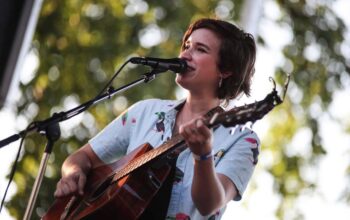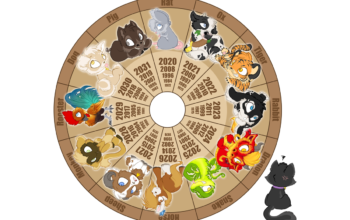The Tragically Hip – Bobcaygeon (1999)
Selon feu le grand Gord Downie, the title could have been any rural town. It just needed to be in Ontario and it needed to approximate a rhyme to ‘constellation’. The closer to Kingston, one supposes, the better since Gord was born in neighbouring Amherstview.
So the word ‘constellation’ was a given. But the title of the song, its setting, indeed any other mundane consideration whatever, was not.
Why.
The song’s lyric has been given a few interpretations, and I won’t bake them off here, but fascism and racism are the accepted themes. Oblique references to the Horseshoe Tavern (and its checkerboard floor), British band The Men They Couldn’t Hang (who played Lee’s Palace, one of the venues where the Hip got started), the Christie Pits Riot in 1933 and the Heritage Front thugfest sixty years later, are all grist for the mill.
A constellation is a group of stars that, to all us coolkids anyway, are indistinguishable one from the other. No star in the group – again, to the lay – has its own characteristics or uniqueness. Each is just a part of the whole blur, and whatever properties we assign to the collective we cascade to every element that comprises it. In the absence of granular, first-hand experience, we generalize, top-down.
Isn’t that just the way racial prejudice works?
Legend holds that Gord would introduce the song in-concert with the question: “is evil in the open, or just below the surface?”
It was in Bobcaygeon that I saw the constellations
Reveal themselves one star at a time
In the snoozy, cottage-country island hamlet of 3,000 where the skies are as clear as our soberest thoughts, we can see each light of the constellation as its own star without Ursa-Major-ing or Big-Dipper-ing or Orion-ing it, or drawing any other false lines between them to create a picture that isn’t really there.
Throughout the entire song, wire to wire, chords change once per bar, never any faster or slower. That ‘harmonic rhythm’, as it’s called, is one constant. Another is the key signature; it too stays the same throughout. In fact, there isn’t even a single ‘accidental’, i.e., a sharp or flat outside of the home key, in the entire song – not one single note. And so whether the setting is the verse’s Bobcaygeon or the bridge’s downtown Toronto, all the structural parts of this song remain in place.
And that’s our backdrop for some of the most impactful word-tone painting we will ever hear in a piece of music. It happens in the lyrical rhythm and in the tonality.
In each verse, the rhyme is set to a four-bar rhythm:
I left your house this morning [2 bars]
About a quarter after nine [2 bars]
Could have been the Willie Nelson [2 bars]
Could have been the wine [2 bars]
This rhyme (on nine and wine) is set four bars apart in an eight-bar cycle, a long, slow breath in the song’s moderate tempo. The melody spans a simple octave, from D to D in Gord’s comfortable middle range. The pattern repeats and ends the verse with our Bobcaygeon hookline from above. Very gentle stuff so far.
The second verse repeats the pattern, mostly. But the last couplet signals trouble. Our protagonist is now en route to the big city, where
The sky was dull, and hypothetical
And falling one cloud at a time
Something’s up. The fist line of that couplet now rhymes within itself just one bar apart, not four, signalling an acceleration, a sense of urgency. And now stars aren’t shining and revealing themselves; rather, the clouds that would obscure them are falling. The mood is ominous, and the music is about to match it.
At the start of the bridge, the floor falls out: the bass drops a third and the song is now in E-minor as the narrative shifts to the riot scene
That night in Toronto [1 bar]
With its checkerboard floor [1 bar]
Riding on horseback [1 bar]
And keeping order restored [1 bar]
The key change is almost imperceptible. E-minor is the relative key of G-major and uses the same notes, and so the darker mood is using the same raw materials: something awful is growing organically out of something innocuous. Notice too that the rhyme doubles in speed to a two-bar cadence; the situation is escalating, and then it comes to a head:
‘Til The Men They Couldn’t Hang [1 bar]
Stepped to the mic and sang [1 bar]
And their voices rang [1 bar]
With that Aryan twang [1 bar]
The rhyme speed doubles again to every single bar, and the vocal melody hits the song’s highest note, an E. It’s like someone reaching for the dark E-minor key, a musical fist-pump, on the words ‘voices‘ and ‘Aryan‘. The instrumental texture has become somewhat thicker, but otherwise, nothing else has changed.
The musical swell then settles down to its previous murmur, the key slides gently back to G-major, and the song fades after the constellations reveal themselves, once more, one shining star at a time.
The evil that Downie suspects is just below the surface has risen into the open from familiar, unthreatening surroundings. Imagine that.
America was no more or less great on November 8 than it was on November 7, 2016. Charlottesville didn’t change demographics between August 10 and August 11, 2017. Minneapolis had the same police force and residents on May 24 as it did on May 25, 2020. The ingredients were all there. They still are. How gently and easily can such awfulness hide in plain view, rise to prosecute its ugly purpose, then quietly retreat again to the same idylls that it lives so peacefully within? It all happens just that easily.
In time, all stars flame out. But the dark matter that surrounds and ultimately swallows them can never go away.
Bobcaygeon is one of this beloved band’s most beloved songs. And it’s absolutely chilling.



